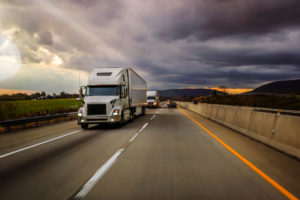By Leo Barros, trucknews.com
As human drivers step back from longhaul and middle-mile work, autonomous trucks could help fill less-desirable roles.
Some might say this is going to take jobs away from drivers, but this is not so, says Stephan Olsen, Paccar’s general sales manager, fleet & specialty markets. Truckers want to be home every night and are seeking first- and last-mile jobs, he adds. Letting them choose jobs that offer more family time will keep them in an industry that is facing a truck driver shortage.
Let the machines do jobs that humans don’t want to do, he said during a session at Trimble’s Insight Tech User Conference and Expo in Orlando.
“Autonomy is a hand-in-glove scenario with hauling freight that has some benefit to human drivers.”
A totally autonomous truck is far out in the future and the present focus is on driver-assisted technology, stressed Ryan Rogers, founder of TextLocate. But he sees an opportunity in increased Hours of Service for drivers who will not be as fatigued.
Another company is focusing on the idea of two trucks functioning as a team. Glynn Spangenberg, chief commercial officer at Locomation, says optimizing the hours a driver can work will improve their quality of life.
Picture two drivers picking up loads, meeting on the interstate, and shifting to autonomous mode. The lead driver would drive while the following truck’s driver is off duty in the sleeper berth as the vehicle follows autonomously. When the lead driver needs to take a break or is out of hours, they swap.
Human-guided autonomy
Spangenberg says the model means the driver would still be present at the shipper, perform inspections, or interact with law enforcement if there is an emergency on the road. It’s why he believes human-guided autonomy is the way forward.
At present, a driver is responsible for what happens when they operate the vehicle. In an autonomously driven truck the software and sensors doing the driving are responsible, Olsen says. The truck OEM, camera company, or others whose name is on the side of the truck share in the responsibility.
Sensor-based views of everything going on around the vehicle provide an opportunity for a sensible conversation about the truth and help deal with liabilities, Spangenberg adds.
Rogers raised the issue of what happens if you don’t have the autonomous technology that he believes will help prevent accidents.
Although drivers want a safe experience while they work, they are nervous about being displaced, but it will take many years to get there. The panelists were of the opinion that Level 5 — or full autonomy — is not likely in our lifetime. But they believe we are headed for Level 4 or highly autonomous trucks down the road.

